If you’re into finesse lure fishing, there will come a time when you need to know what the best knottable wire trace material is. Whenever you’re fishing lures for small predators like perch and panfish, there’s always a chance that a pike, pickerel or other toothy predator could come along and spoil the fun.
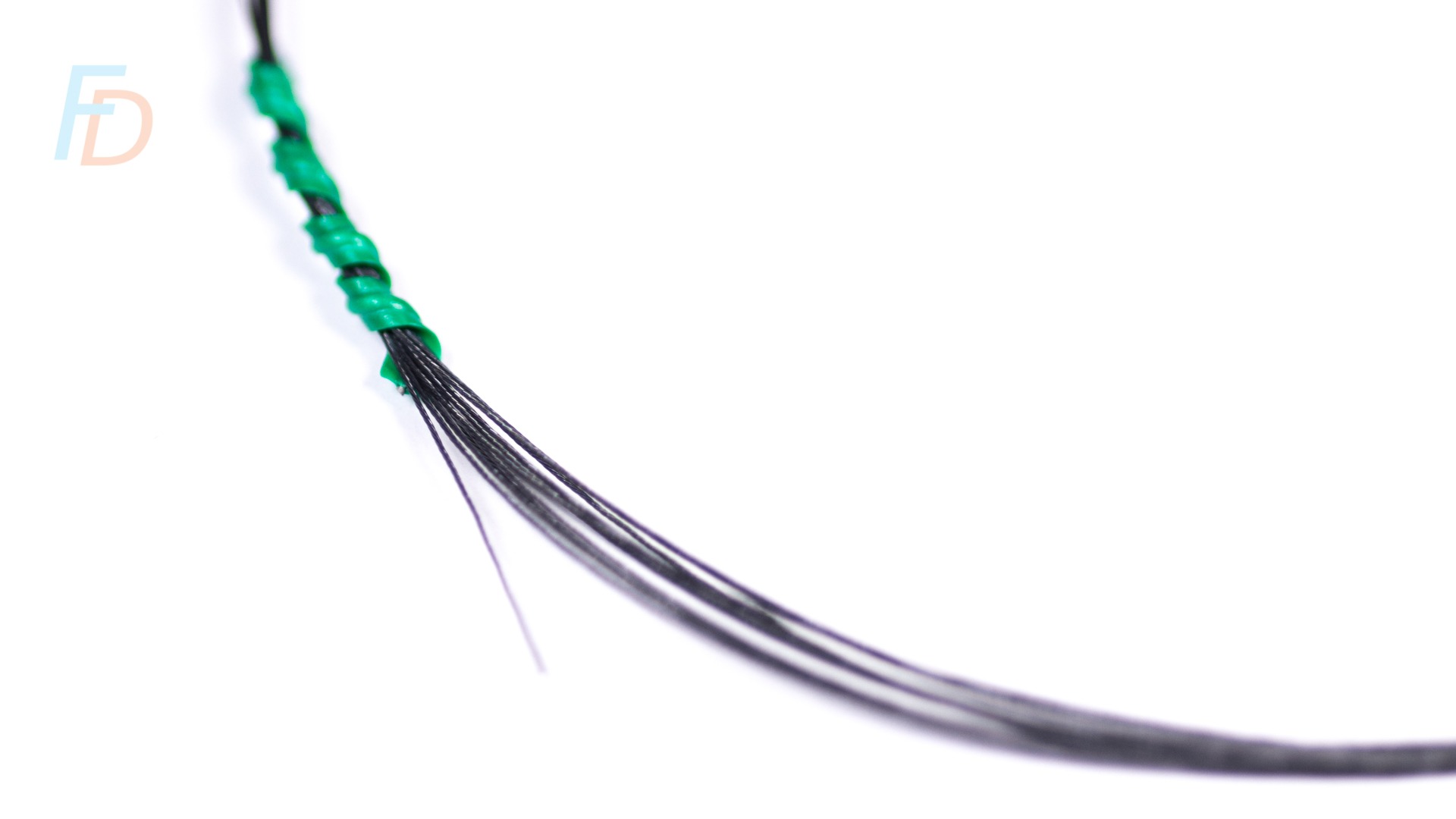
Let’s start with an obvious fact, the last thing any angler wants to do is leave a hook in a fish. On top of that, it can also limit your enjoyment if you’re scared to use your favourite (and expensive) small lure in case the “wrong” fish comes along and bites it off your line.
This season I’ve been researching and buying as many likely-looking products as I could find to try to answer this question. I also wanted to solve the problem that happens with most wire traces – particularly for BFS (Bait Finesse System/Ultralight Baitcasting) anglers. That is:
When you attach a trace with crimps or knots, you can no longer wind the lure right up to the tip-top guide…and having that longer “drop” of the lure destroys some of the most fun casting techniques found in Bait Finesse System fishing.
It turns out it isn’t enough to simply find an ultralight wire trace material and expect that is going to solve your problems…
Which Knottable Wire Trace Materials Were Tested?
Because there’s such a lot of conflicting information on social media about different brands and models of knottable wire trace, I got frustrated enough to end up buying a bunch and testing them for myself.
In the end, I managed to narrow it down to four products and their performance varied hugely – depending on what characteristics are most important to you. That means, depending on the style of fishing you do, you might find a different “winner” than the one I have picked. With that said, there was an absolutely clear best product when it came to eliminating the problem of the “long drop”… so make sure you don’t miss that one (and the key detail to making it work).
The four products (links further down the article) I tested were:
Just before we get into the review, I need to let you in on the solution to using ultralight wire traces and casting with the lure wound up to the rod - tip
How to Rig a Finesse Lure Fishing Bite-proof Trace with a Super-short “Drop”
WARNING: This method only works with certain knottable wire trace materials PLUS, casting with the wire inside the line-guides may well wear out those guides more quickly
With that disclaimer in place, here’s the solution I found (and although I’m not aware of it, other folks might well have figured it out as well). Basically, with wires that are flexible enough and which also provide enough friction on their outer surface, you can use a braided PE line on your reel and then attach your trace using an FG knot.
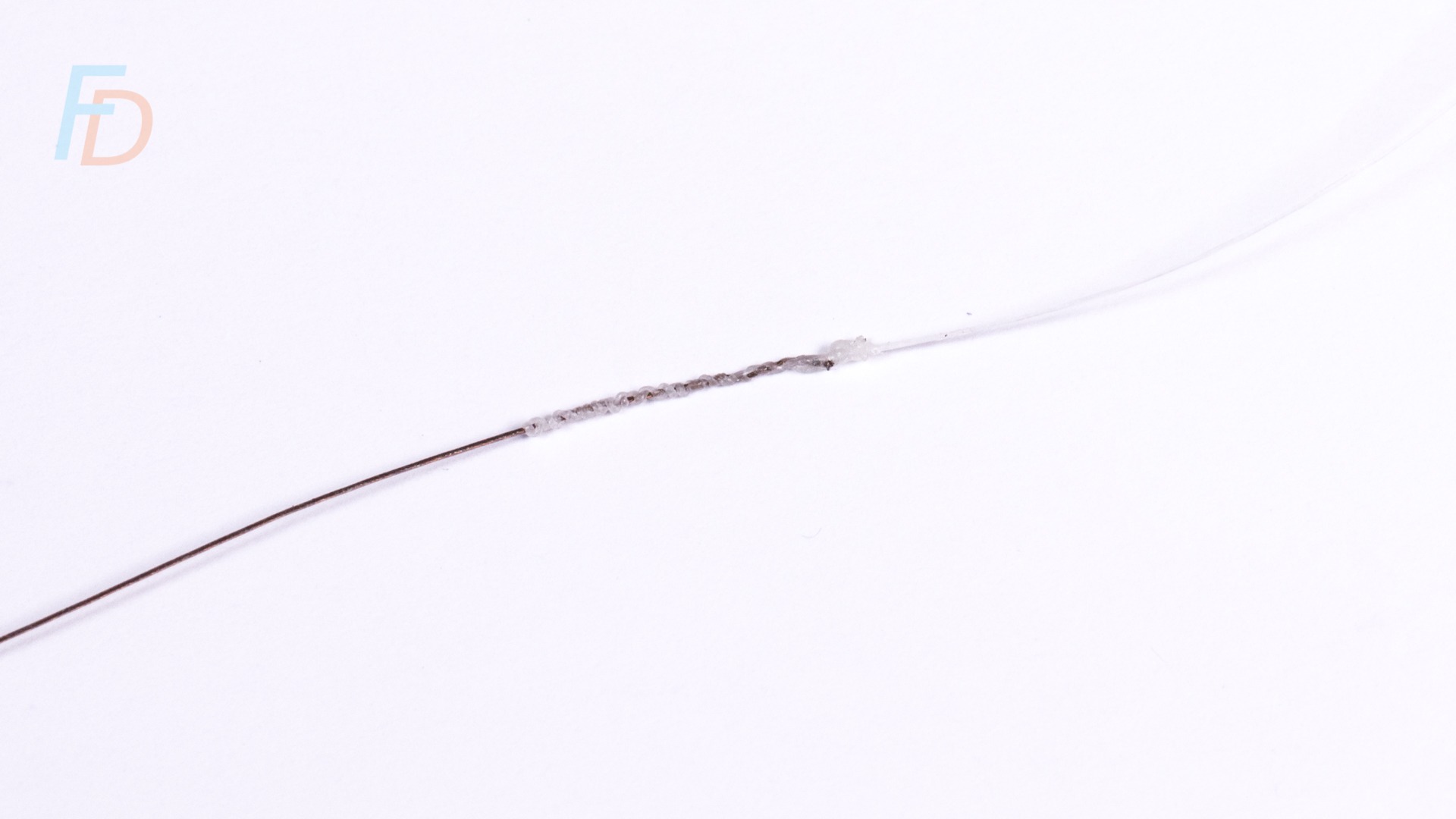
Macro shot of an FG knot attaching braided reel line (right) to a fine, knottable wire trace (left)
The crucial feature of an FG knot is that the cut end of the wire trace (or whatever your trace/leader material is) faces towards the reel. This prevents that cut end from catching or jamming in the line guides during a cast. When using a baitcasting reel (and particularly one with a small, BFS spool – and a fast casting stroke used with light lures), snagging that knot during a cast is an absolute disaster.
You would need a pair of scissors and spare braid (or a spare reel) to rescue your fishing day from the resultant bird’s-nest of a backlash… I have found that out to my own expense using an Allbright knot and fluorocarbon leader.
OK, now on to the test results:
Flexonit 1 x 19 ultra fine trace (steel)
The extremely low diameter (0.20mm for the 10lb – or an unbelievably thin 0.15mm/6lb option) and impressive flexibility gave me high hopes for this material. Added to that, since it is a 19-strand braid, the surface texture is ideal for making a strong FG knot.
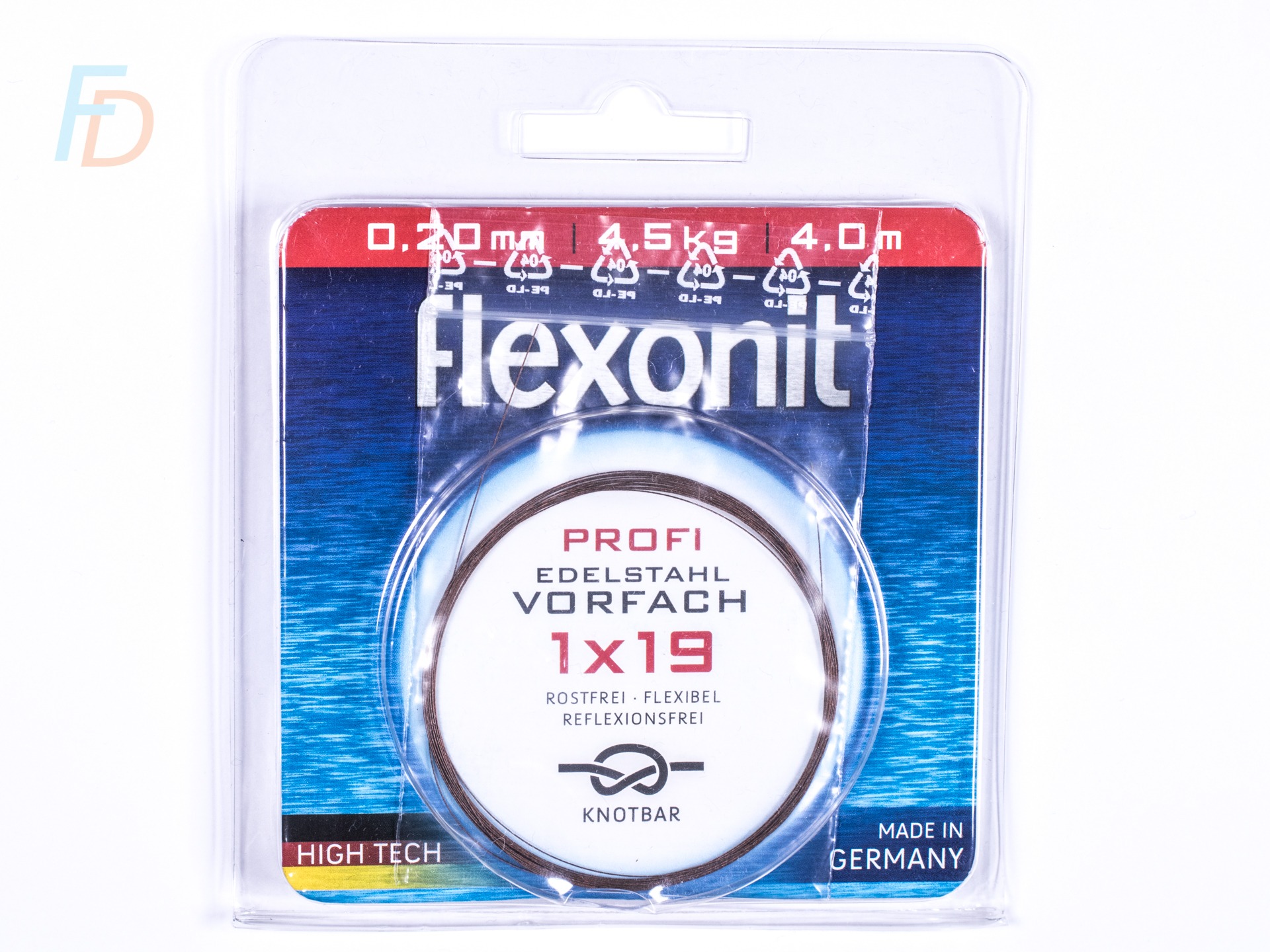
In fact, there is a great deal going for this ultra light wire trace – it is certainly easily knottable when it comes to attaching a quick link clip for your lure too. For strength and simplicity, I favour a figure of 8 loop knot for attaching that. One option is to “loop to loop” your figure of 8 onto the clip.
However for greater freedom of movement of that joint, if you choose non-welded clips, it is possible to slip the trace-loop behind the clasp and tug it into the narrower end of the clip. As long as the clasp is closed properly with the lure attached, this keeps the clip in its strongest and most streamlined orientation. That’s obviously important when pulling hard against the lure in a snag or a fish.
Being able to reverse this process is important – since you don’t want to be cutting the clip off each time you need to reel the trace back up through the guides and onto your reel.
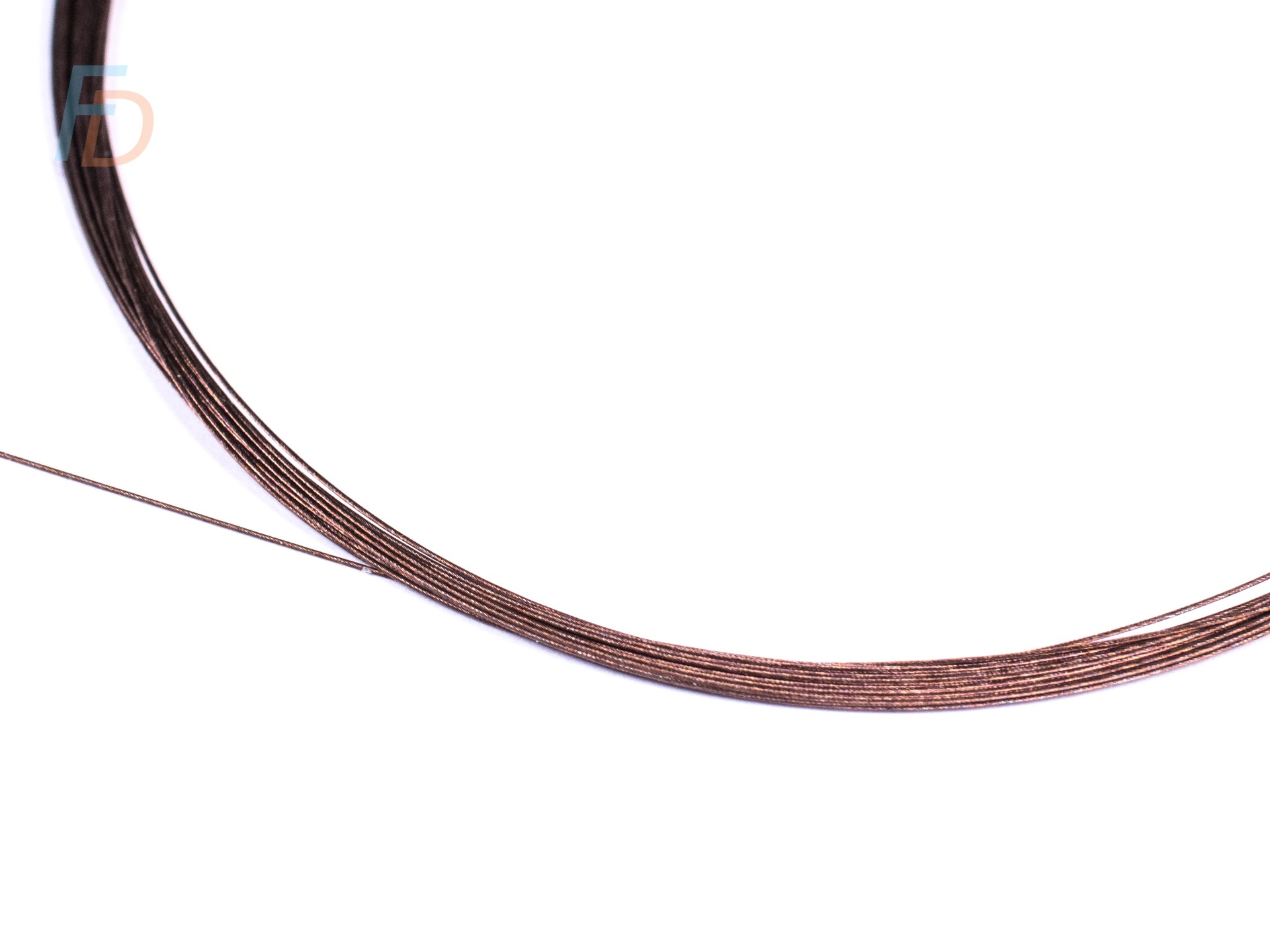
Color and texture of Flexonit 1 x 19 (10-lb)
During the first fishing trip with Flexonit I was initially impressed. The FG knot held perfectly, the material allowed me to wind the lure right up to the rod tip and perform a variety of flip and flick casts with no problem. The low diameter and surprisingly limp, flexible texture (for a wire) were definite plus points.
I thought I’d cracked it at my first attempt!
There was just one BIG problem for the BFS angler. After only an hour of fishing, the sharp angle made between the rod-tip and the lure when it was reeled up to the rod tip left the trace mangled and impossible to re-straighten. The steel content of this trace material seems to be its Achilles heel.
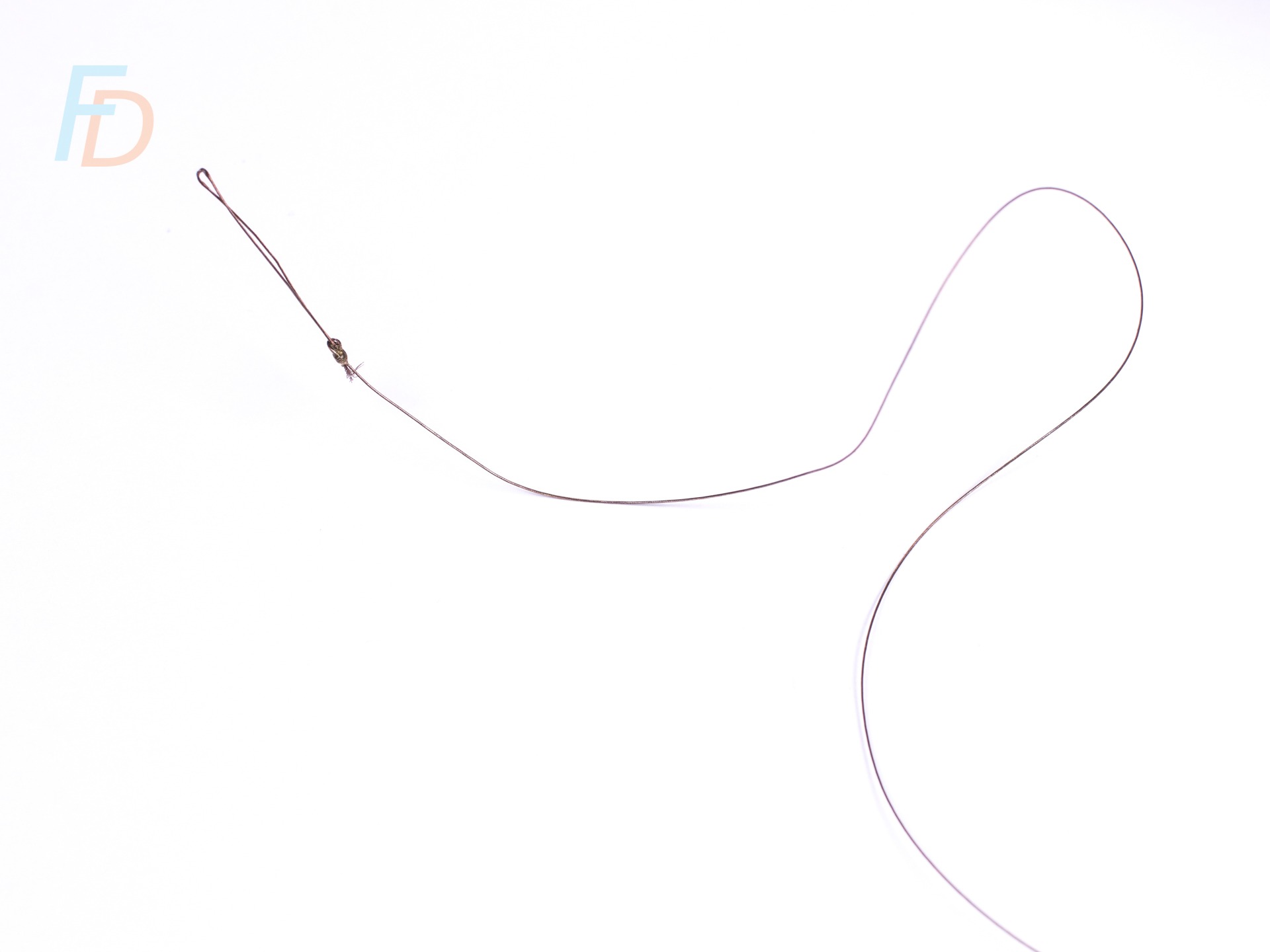
Permanent kink in the Flexonit 1 x 19 after casting a lure off the tip of the rod for an hour
Damnit – so close!
Even so, this could be a good option if you don’t need to wind the lure all the way up to the tip ring and I bought mine from here:
Knot 2 Kinky Leader Wire Review
Knot 2 Kinky is a single strand Nickel/Titanium alloy and is highly elastic and very, very straight. As well as being corrosion-free, it is nearly impossible to kink.
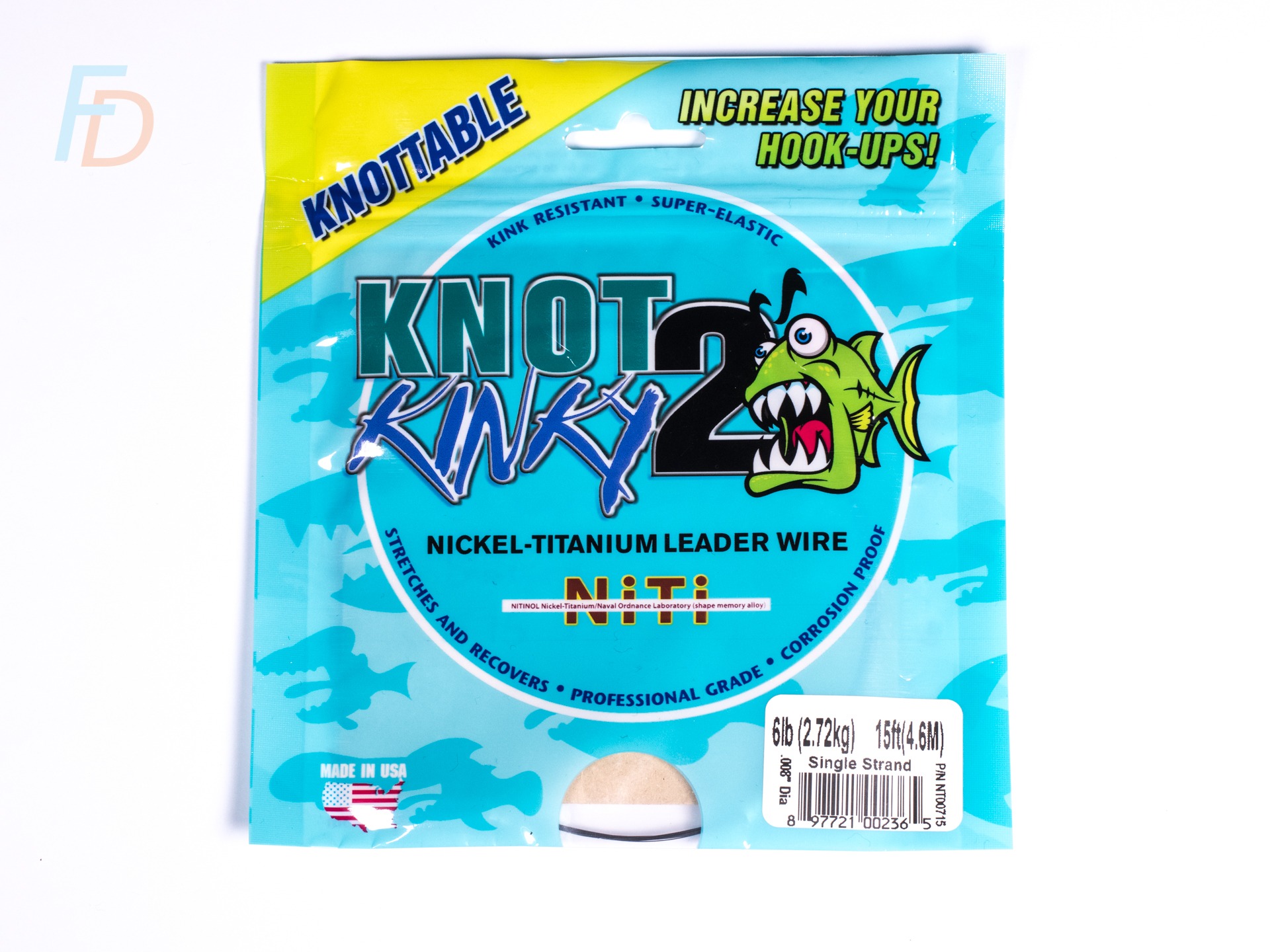
The relative stiffness of this knottable wire trace would probably make it good for swim or glide-baits (as well as preventing the belly treble on hard baits snagging the trace while casting). The 6-lb breaking strain option is 0.20mm diameter (the same as 10-lb Flexonit) with a very shiny, slick surface.
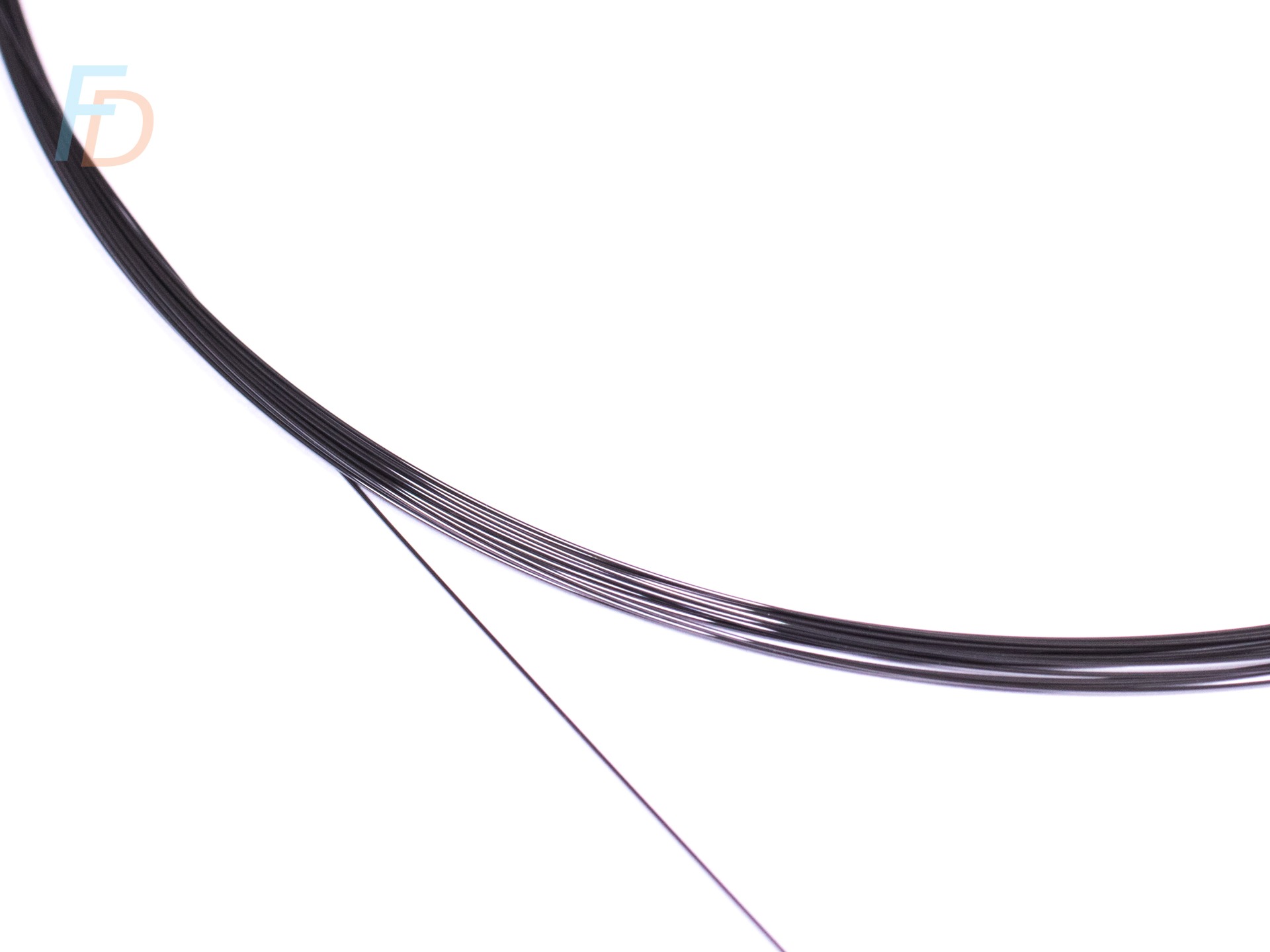
In combination, the stiffness and smoothness makes an FG knot impossible – and not a possible option for “short-drop” casting. My Knot 2 Kinky was bought from
Next, another single-strand wire.
Cahira Nitinol Single Strand knottable wire trace
In 6lb this has a stated diameter of 0.21mm and is a nickel/titanium alloy – again with a shiny surface and an overall similar feel to the Knot 2 Kinky equivalent. Although both of the single-strand products featured here will knot well, I would probably prefer to use micro crimps as fastenings.
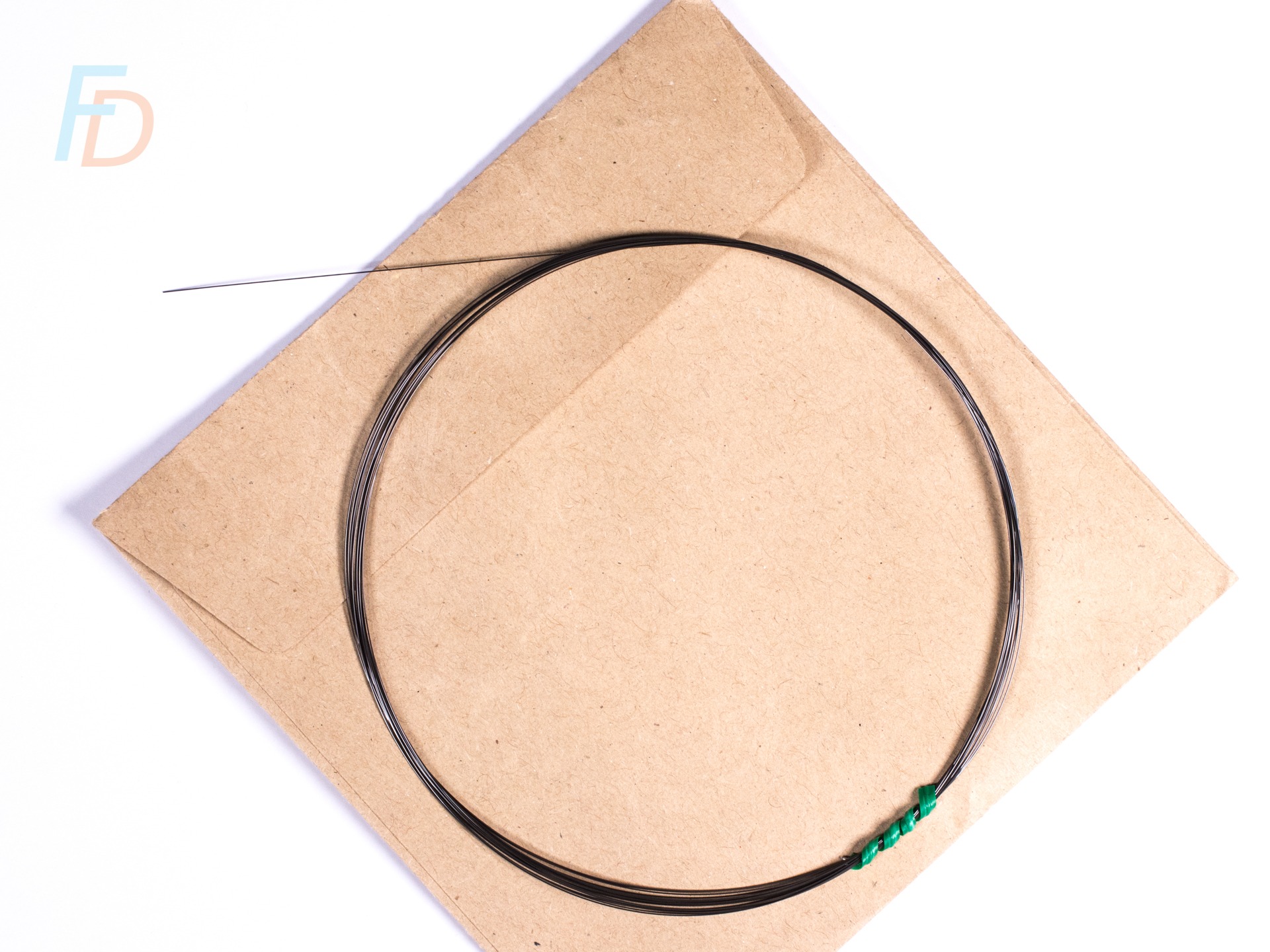
As stated on the Cahira website, triple-passing the wire is essential for a secure connection.The relative stiffness and shiny surface of Cahira Nitinol mean that (just as with the Knot 2 Kinky) an FG knot is impossible to secure. All told, there is little to choose between the two single-strand trace materials featured in this article and my wire was bought from
Cahira Nitinol 7-strand Knottable Wire Trace
Drum roll! This one, for me, is the true game-changer in ultra light wire trace materials.
While the diameter of 0.24-mm for this 6lb braided wire is greater than the 10-lb Flexonit, it blows every other trace material away when it comes to BFS.
The Cahira 7-strand is slightly stiffer than the Flexonit, but much, much more flexible than either of the single-strand trace materials. In combination with that flexibility, the roughened surface creates a good amount of grip for forming a strong FG knot.
Unlike steel knottable wire trace materials, the 7-strand Nitinol from Cahira, is extremely kink-resistant. Even if you catch this trace up in a snag it will, more than likely, come out in perfectly good condition. In the same way, catching a pike is unlikely to spoil the braided nickel-titanium trace.

Finally, the acid test of casting with the trace wound up inside the line guides revealed fantastic results. As well as the FG knot flying easily out of the guides during casting, the trace was completely straight - even after a full morning of fishing.I used a figure of 8 knot and quick change clip as for the Flexonit and this worked well as a system – since the loop knot connection provided some additional mobility to the lure (on top of the flexible trace material).
Again, it’s worth repeating that the friction from a braided titanium trace is likely to wear out your line guides more quickly than regular braid (particularly the tip-top). At this moment in time I’ll need to fish with this system for much longer to determine whether that is in fact the case.
If you want to join in on those experiments, I got my Cahira Multistrand 6lb wire from
Other Knottable Wire Trace Materials?
Did I miss out any ultra light wire trace materials that you know of? Let me know in the comments and I'll try to investigate those too. Also, please feel free to share your own experiences with the materials featured here.
Paul

Any update on guide wear with the Cahira 7 Strand? I just can’t imagine wire not damaging guides.
So far so good – I think because the wire is very soft/flexible it might limit the impact on any kind of ceramic-lined guide. However, it’s not like I use this rig every week – it is more of an “every now and then” option for me; so I probably need more time to give a truly definitive answer.
All the best
Paul
This is a great article. I have definitely been apprehensive about fishing in certain areas for fear of losing my $10 lure – especially when kayak fishing. I will definitely check out a few of these options. Cheers!
Thank you Isaac – and I hope life is treating you and your family well!
I’d love to catch up in person if the chance presents itself in the future.
Paul
[…] Knottable Wire Trace: Which Ultra Light Wire Trace Material is Best? […]
The best stuff I have tried is AFW Surflon Micro Ultra which goes down to about 6lb. It appears to be similar to the Flexonit which I’ve not tried. I also use it in heavier BS for pike fly fishing. The Knot2Kinky seems to be popular but I’ve not found it very good for anything, let alone BFS. The AFW wire is very easily knottable with a variety of knots so you can do anything with it. AFW do a lot of different wires but this appears to be the best of theirs that I have tried, though they may do an even better option. There’s a Supreme version but I’ve only seen it in heavier weights in the UK. One thing I would say is that most pike traces are probably way longer than they need to be just to protect against a bite through. If a pike manages to roll on your BFS line and wrap itself up it’s probably going to snap anyway.
Chris – thanks for this; I’d be curious to know how the Surflon fares when it gets a bit wrapped up (or munched by a pike…) – the Flexonit was pretty impressive right up until it experienced any bending under tension… Then it just kinked up into an ugly “slinky”.
The braided Cahira nitinol stuff was supple and also “grippy” enough on the outside (due to the braided construction) as well as being unbelievably resistant to kinking up.
P
I’ve used the AFW 10# 7-strand with less than satisfactory results. It kinks and the plastic coating strips off. Didn’t think to tie an FG knot though. I made up short little bite leaders just 3 or so inches long with a perfection loop at one end and a snap at the other. Just enough to prevent bite offs from the many pickerel in my area. Been looking for a better solution, so I just ordered the Cahira in 6 & 12# from the UK. With shipping came to about $30. Not cheap but better than losing lures. Honestly, I’m not sure I want to use it in a length that would enter the guides.
What I tried so far:
– single strand Ni/Ti wire: FG knot slides off , as you reported
– ordinary, plastic coated multi strand SS trace: FG knot peels off the plastic coating
– some soft, knottable, kinky stuff: not worth to mention, became useless after first action (usually snag, not fish :))
– Fluorocarbon: way too clumsy in that size, which would be suitable for pike
You made me curious about Cahira Multistrand, just wouldn’t be at cocaine price :))
Cheers Janos!
Paul